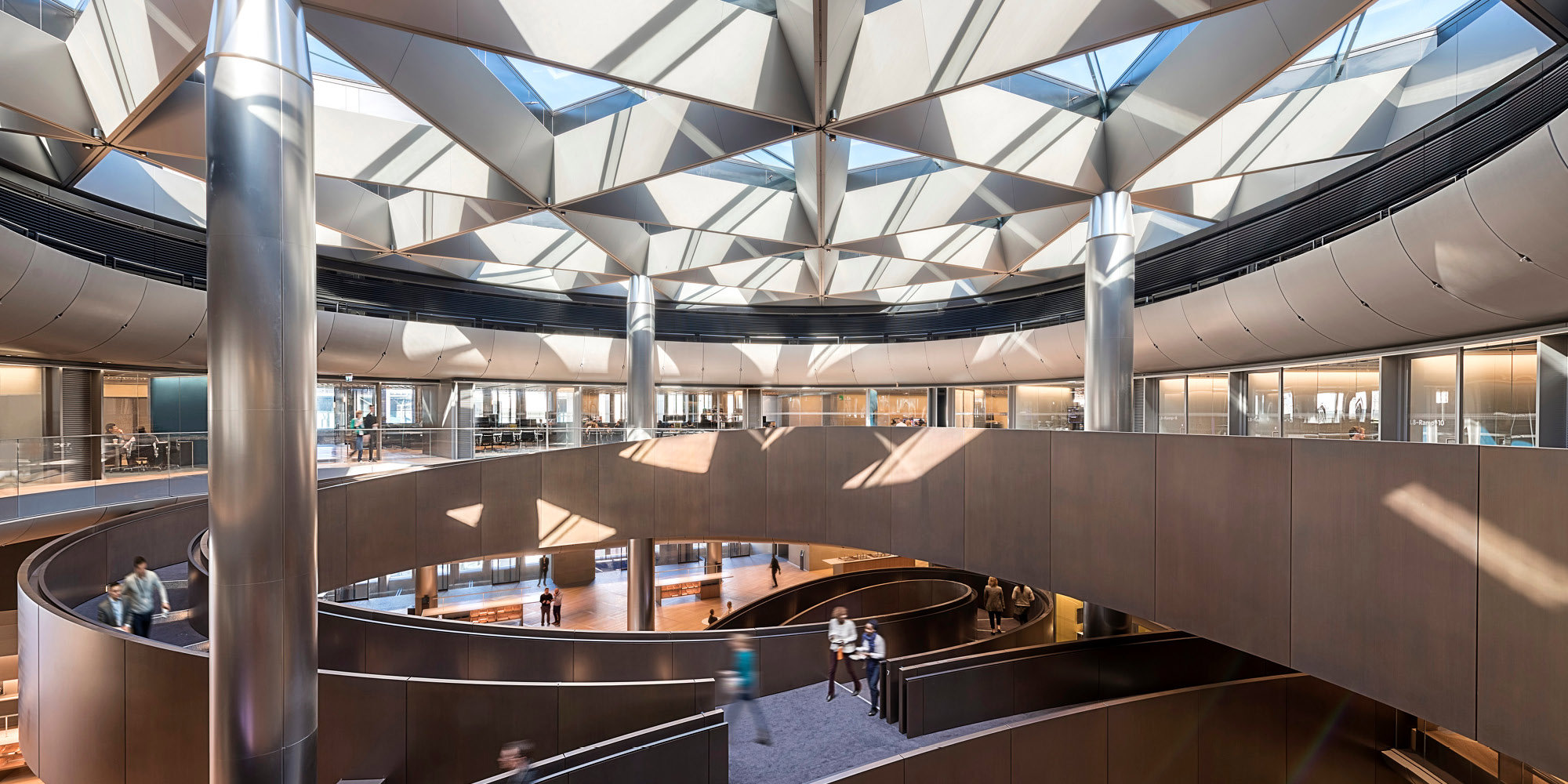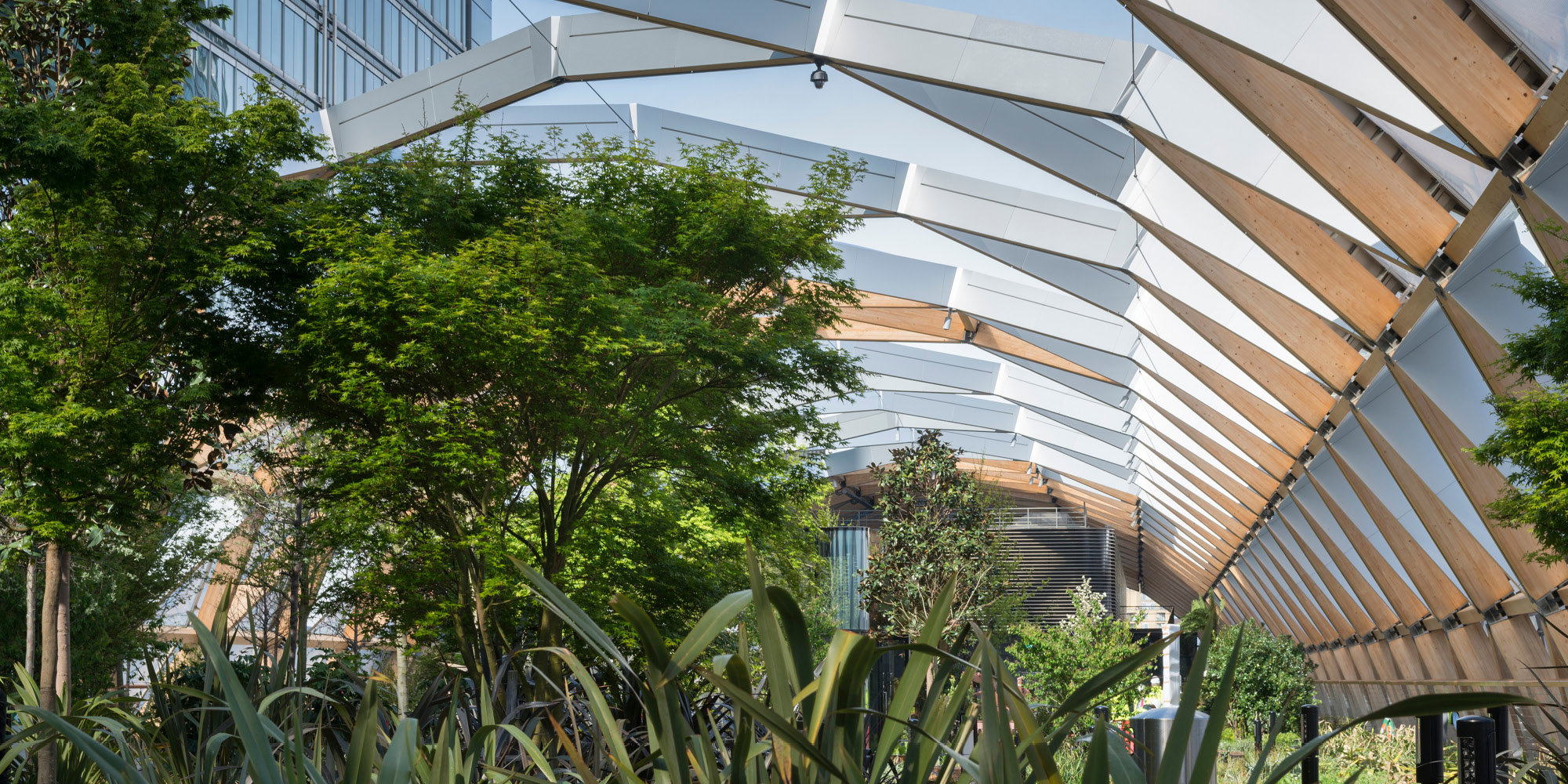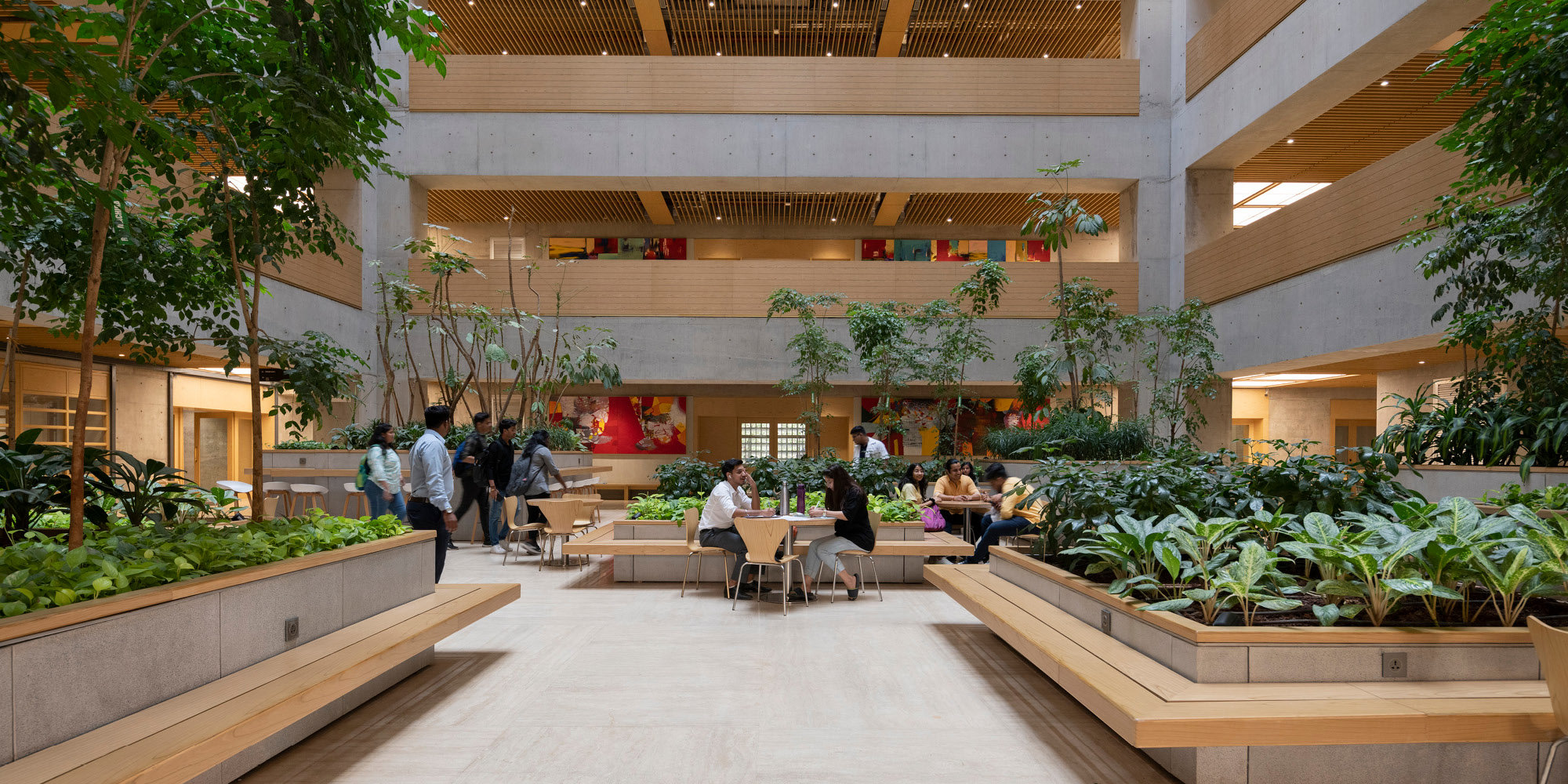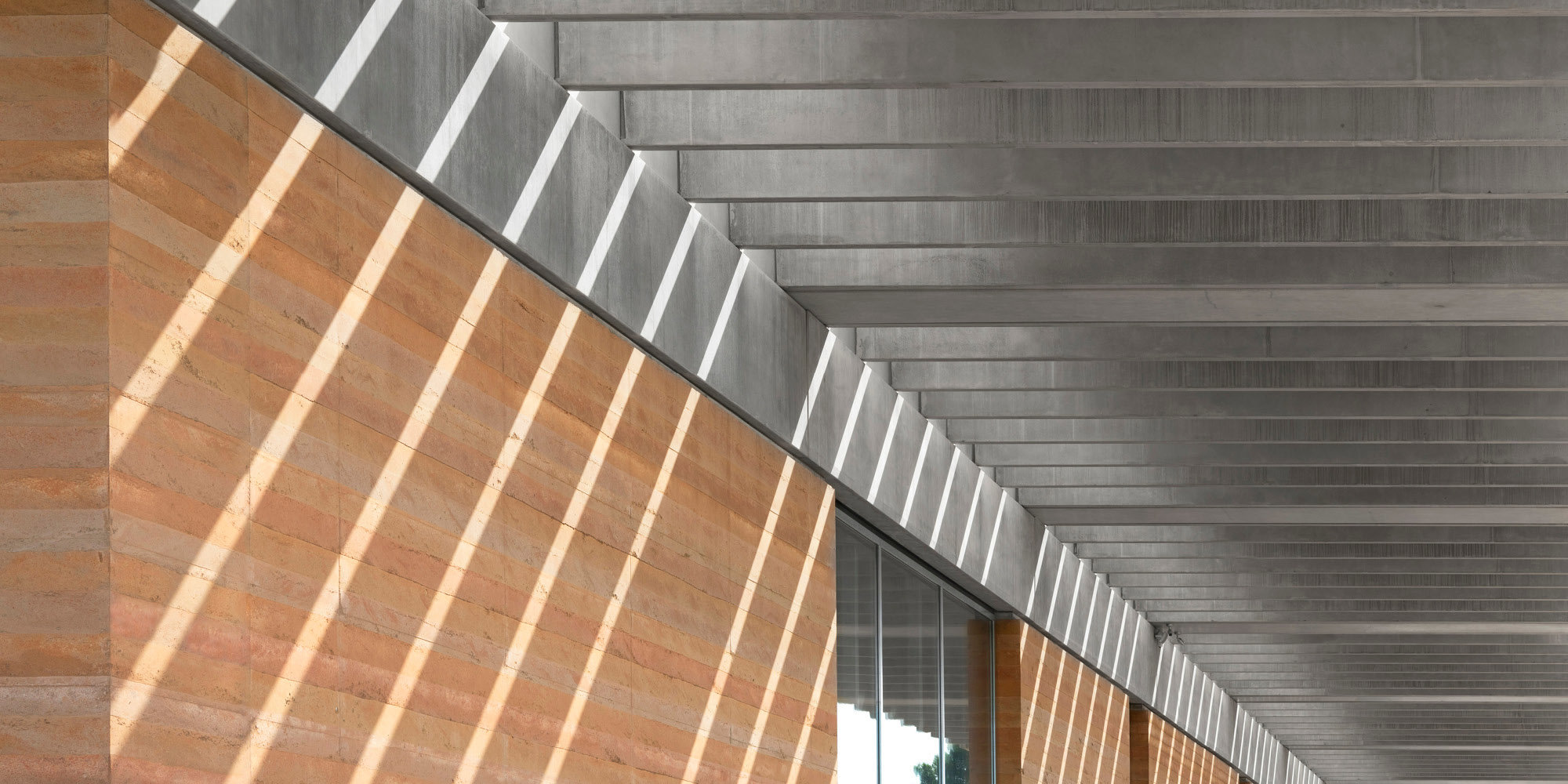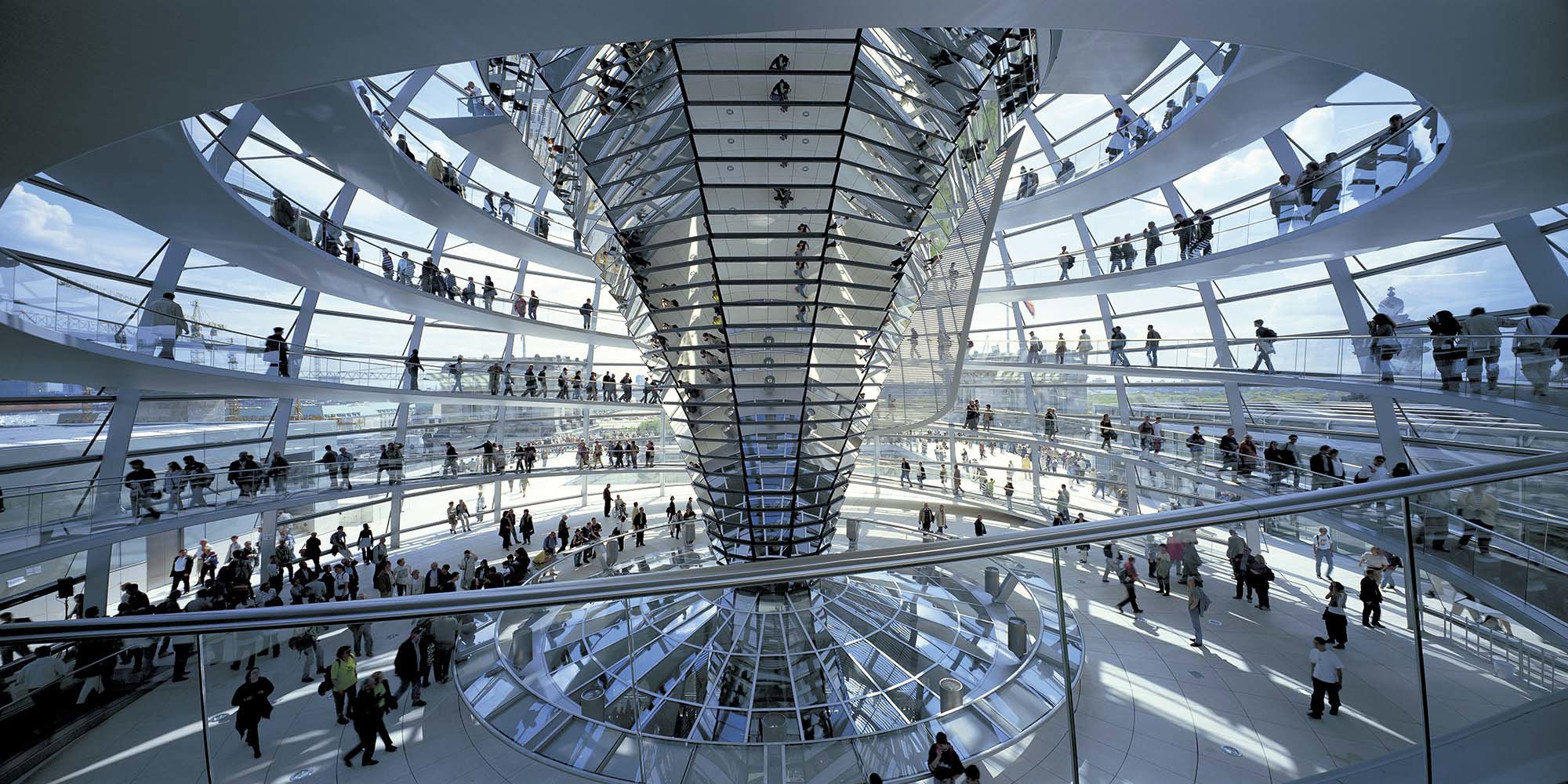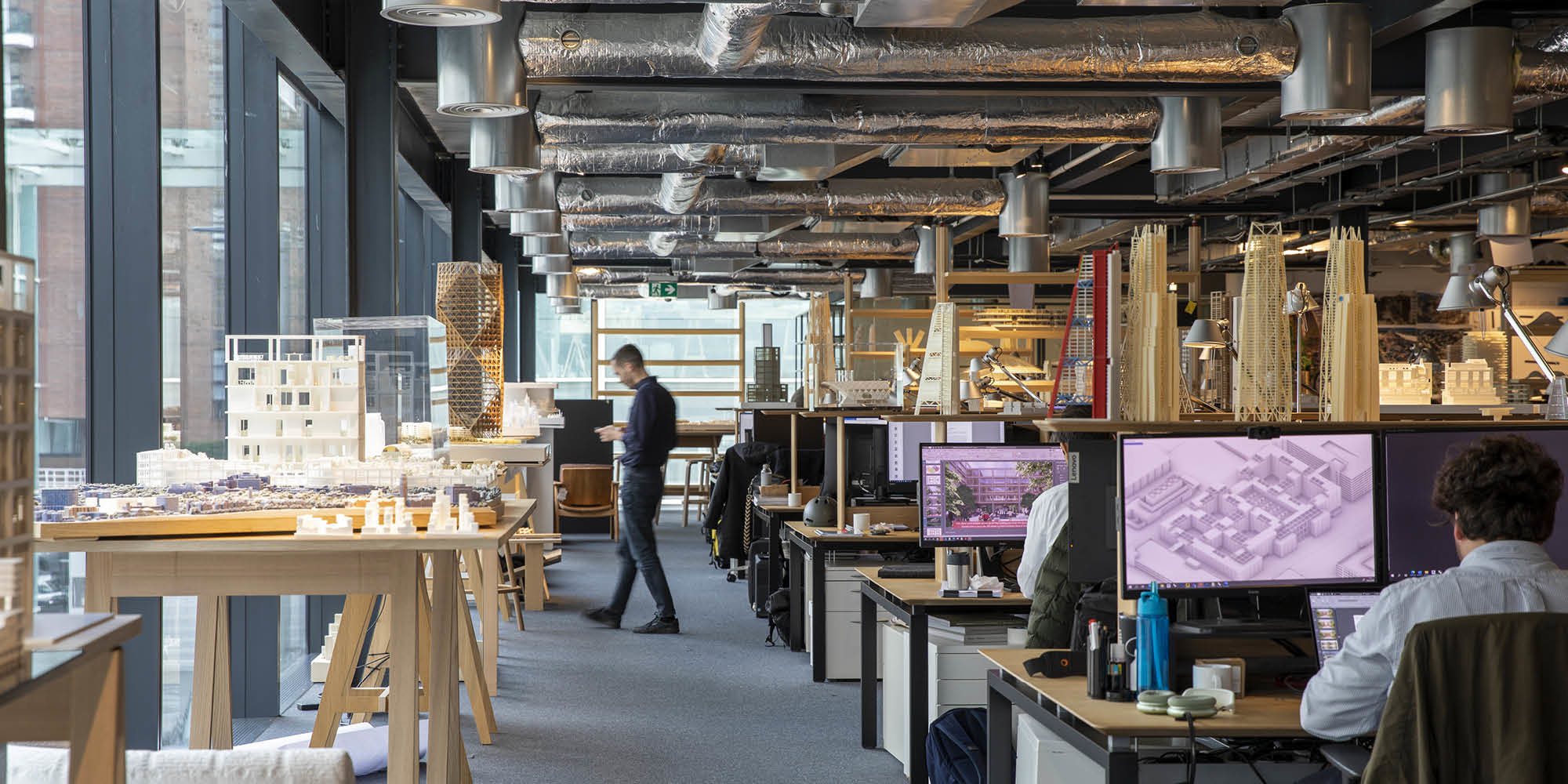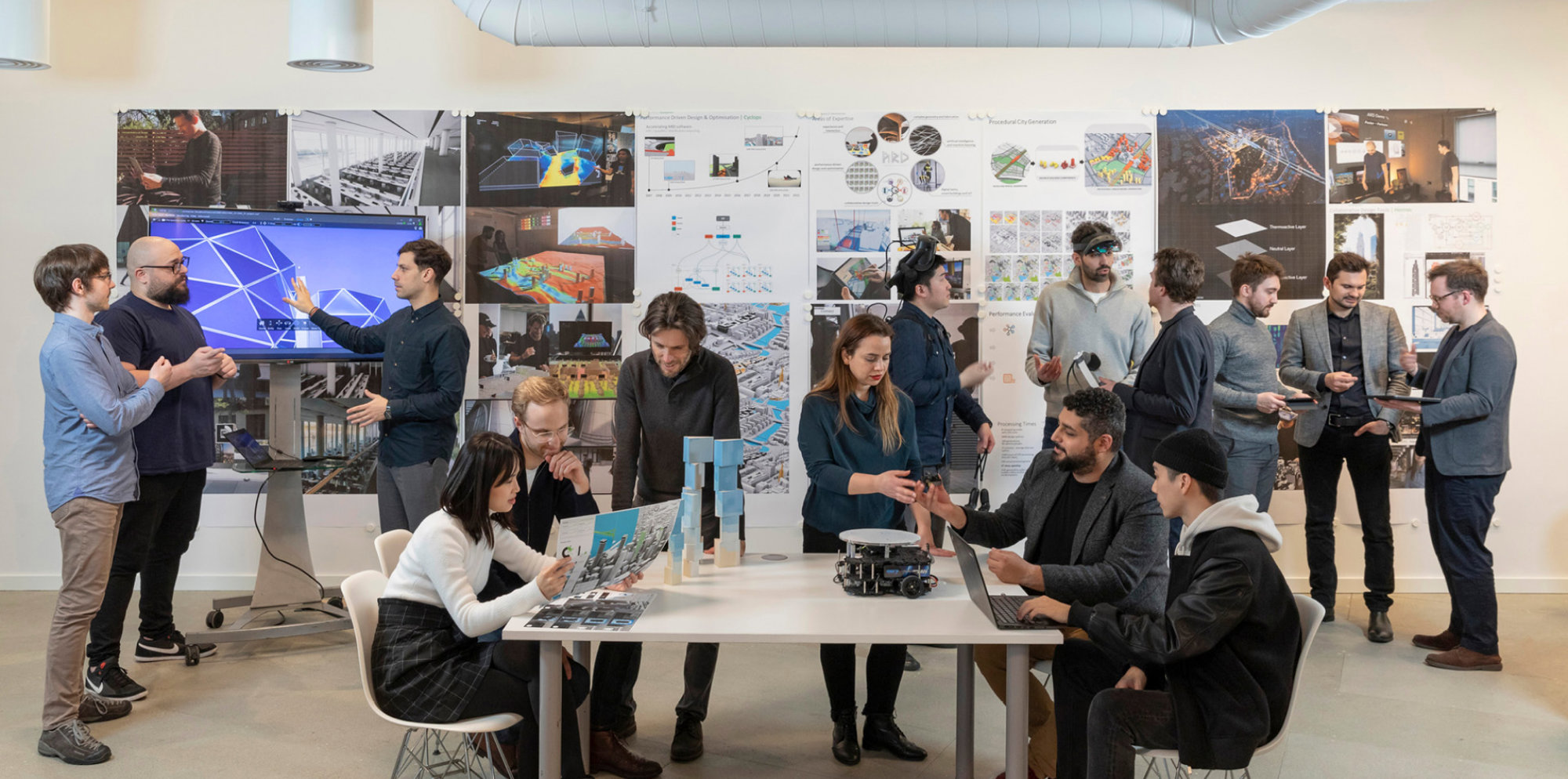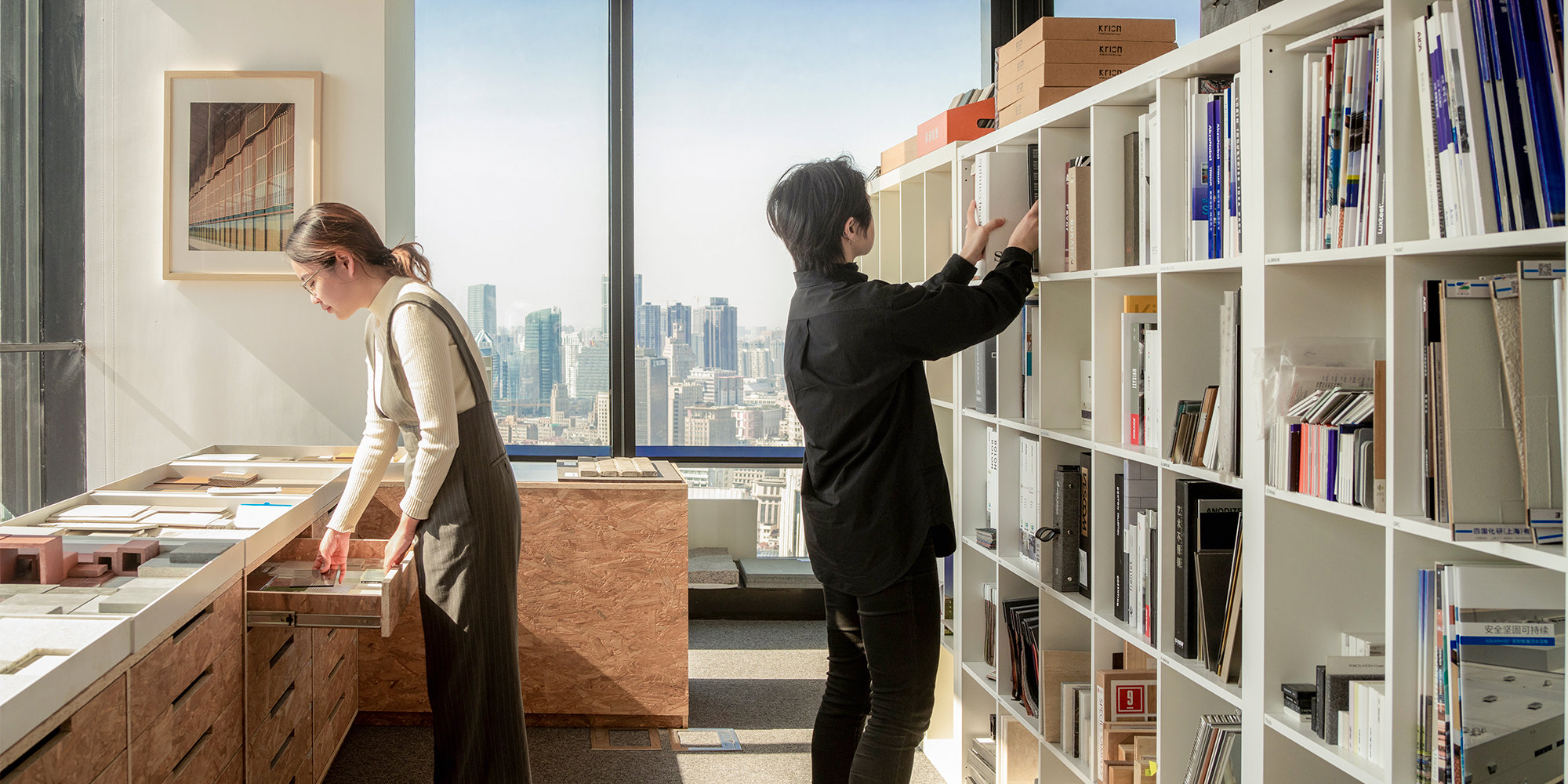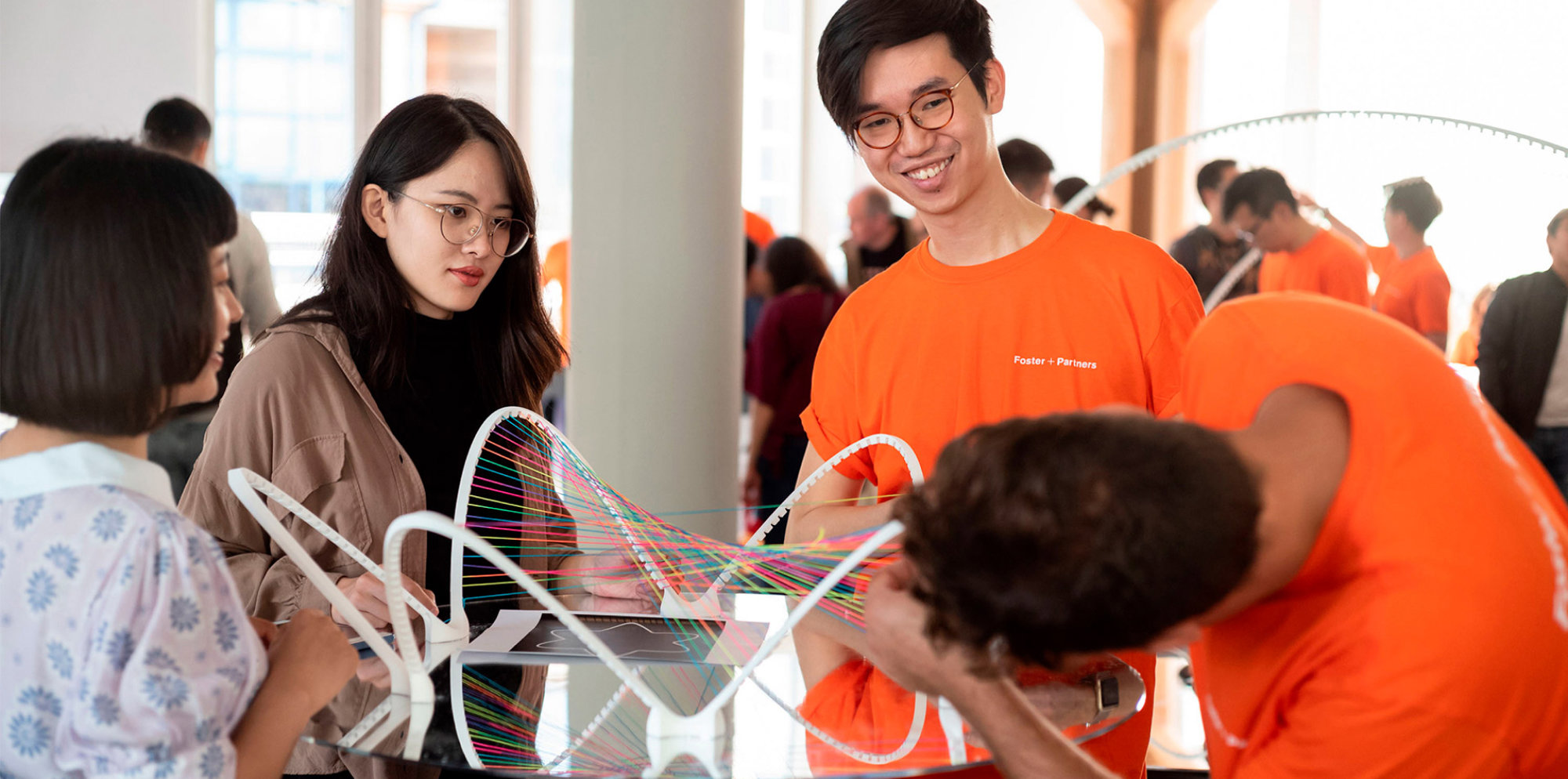The Masterplan for the Edinburgh Royal Infirmary at Lauriston Place demonstrates how an inner-city site that has outlived its former use can be transformed to create a new high-density urban community, avoiding the harmful alternative of building on rural land. It also highlights how historical buildings can be revitalised and enhanced by their sensitive juxtaposition with contemporary buildings.
The 8-hectare nineteenth-century hospital campus sits between the Victorian fringes of the old city and the urban parkland of the Meadows. This large and currently inaccessible site, which acts as a formidable barrier between the town centre and the residential districts to the south, will become a vibrant new urban quarter, bringing employment, housing and new public amenities to the area. It will generate 4,000 permanent jobs and provide 712 new homes. In addition to housing, the mixed-use development will include high-quality office space, a five-star hotel, a health club, restaurants, cafes, a supermarket and other shops. A new diagonal route will cut through the site, connecting the castle and the old city to the north with the Meadows to the south and the residential districts beyond. Positioned on many peoples daily walk to and from work, the masterplan site will become the very heart of the city.
The site lies within a conservation area and includes nine listed buildings, of which David Bryces Surgical Hospital is listed Category A. Furthermore the entire site falls within the area at the centre of Edinburgh which was designated a World Heritage Site by UNESCO in 1995. The design team has worked closely with the City of Edinburgh Planning Department, Historic Scotland, the Royal Fine Art Commission for Scotland and the Edinburgh World Heritage Trust from the earliest stages to strike a balance between conservation and establishing a convincing urban design.
The best historical buildings will be retained and enhanced with contemporary architectural interventions. Residential buildings will be placed at the quieter edges of the site and commercial and retail activities concentrated in the centre. New office buildings will frame a large new public square with a sunken amphitheatre at its centre, for concerts and other public events.
Subterranean car parking and the removal of the undistinguished extensions to the original hospital buildings will allow the ground level to be extensively landscaped. The area of green space will be increased from 8 to 34 per cent providing 2.8 hectares of soft landscaping, extending the landscape of the Meadows into the site.
Credits
Developer: Southside Capital Ltd
Architect: Foster + Partners
Architects for Hospital and Affordable Housing: Page and Park, Richard Murphy Architects and Hurd Rolland Partnership
Planning Consultants: Montagu Evans
Spatial Layout and Pedestrian Movement: Space Syntax
Landscape Architect: Michel Desvigne in association with Derek Lovejoy Partnership
Environmental Consultant: Waterman Environmental, Structural Engineer and Waterman Renwick
Building Services: Roger Preston and Partners
Historic Buildings Consultant: Hurd Rolland Partnership
Transport Consultant: McLean Hazel
Traffic and Highway Engineers: SIAS
Cost Planners: Thomas and Adamson
QUARTERMILE EDINBURGH NEWS RELEASE
Plans for a new 400 million development at the old Royal Infirmary of Edinburgh at Lauriston Place a site extending to 19 acres in the heart of the city are poised to be the catalyst to bring new jobs, homes and investment to the area. The planning application for the scheme, called Quartermile Edinburgh, was lodged today (Friday, 10 May) with City of Edinburgh Council by Southside Capital Ltd; a joint venture comprising Taylor Woodrow, Kilmartin Property Group and Bank of Scotland.
This new business and leisure community is expected to create over 4,500 jobs in retail, leisure and local businesses, as well as a new neighbourhood including over 600 new homes to house up to 1,600 residents in a mix of private, rented and special needs housing. The site will form a natural link and through route from the Meadows to the Old Town and Royal Mile, with landscaped public space, shops, cafs, bars and restaurants, as well as office space and a hotel.
Andrew Brooks, development director of Southside Capital, is confident that Quartermile Edinburgh presents a key opportunity for the regeneration of a previously neglected area: The project create opportunities in employment, housing, and leisure for local people. Moreoever, it will act as a major driver in the regeneration of this part of the city by bringing in substantial public and private investment as well as stimulating the local economy.
The combination of offices, homes and leisure facilities will ensure Quartermile Edinburgh breathes life into this area of the city.
The world-renowned firm of architects, Foster and Partners, has been appointed as the creative force behind the masterplan to design the mixed use scheme. Working alongside Edinburgh-based Richard Murphy Architects, Page and Park Architects and Hurd Rolland Partnership, this experienced design team has drawn up a bold masterplan which blends together old and new architecture to create an inclusive environment.
Andrew Brooks explains: Revitalising the best of the existing buildings and integrating them with excellent new architecture is really at the heart of our masterplan. We are delighted that the Surgical Hospital with the clocktower will be brought back to its former glory, reborn as a luxury hotel. The finger blocks of the Medical Hospital facing the Meadows will become apartments with superb views, and the two central buildings by Sidney Mitchell will also be restored and converted for mixed use with offices, restaurants and a covered piazza linking the two together.
Approximately 20 million is to be invested in the preparation of the site, creating mature, open spaces, dedicated cycle lanes and walkways through the development, with a public arena in the centre of Quartermile Edinburgh bringing a new focus for leisure and entertainment in the city.
Edinburghs architectural and heritage bodies have also played a vital part in Quartermile Edinburghs planning process over recent months, contributing to the proposals through Southside Capitals extensive consultation programme. In addition, the consortium has met with a number of community groups and local residents for feedback, and has planned an ongoing programme of public exhibitions and presentations throughout the summer.
Andrew Brooks comments: We are acutely aware of the history of the area and the justifiable expectations of the local community. Southside Capital will work with all parties to deliver a new community that will provide benefits not only locally, but far beyond its immediate boundaries.
He concludes: This exciting joint venture points to a new future for this important site. Recent major schemes in Edinburgh, such as the Museum of Scotland and the New Parliament, show an enthusiasm to attract world class design. Drawing comparisons from Foster and Partners work, including the Great Court at the British Museum in London, and the Reichstag in Berlin these are examples of what can be achieved by refocusing and forging ahead with ambitious schemes of integrated architecture. These plans will transform this large hospital estate into a vibrant 24-hour community, creating many new and sustainable jobs and large scale investment opportunities.
